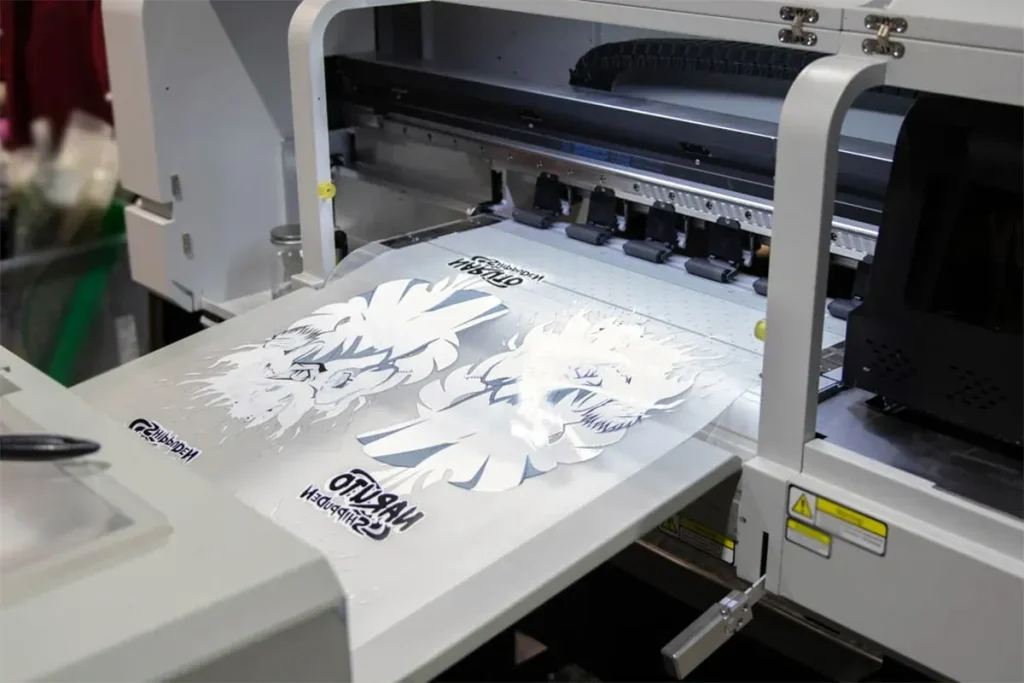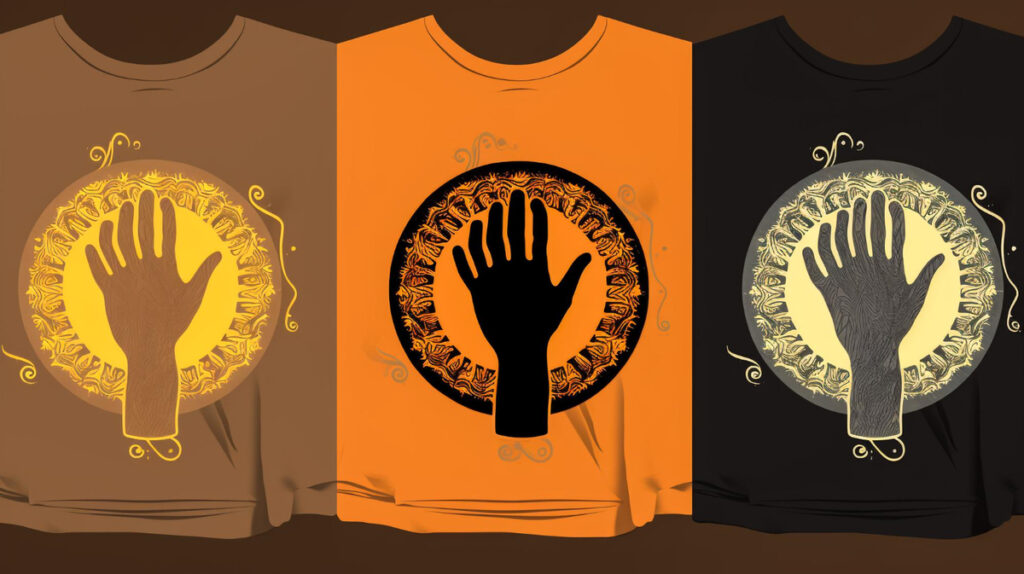Maximizing DTF printing can dramatically enhance the quality and vibrancy of your printed designs. As the popularity of Direct to Film (DTF) printing grows, so does the need for effective strategies that lead to superior output. In this article, we will explore essential DTF printing tips that focus on achieving quality results through adept techniques and best practices. Whether you are a seasoned professional or a burgeoning entrepreneur in the apparel business, understanding various DTF printing methods will empower your creative endeavors. Join us as we uncover valuable insights to transform your printing process and deliver eye-catching designs that truly stand out.
In the world of graphic reproduction, maximizing DTF printing involves optimizing direct-to-film processes that provide unparalleled print quality. This approach utilizes specialized materials and techniques to produce vibrant, intricate designs on a variety of fabrics. As we delve into this topic, you’ll discover alternative methods, tactical recommendations, and industry insights that can elevate your printing game. From pre-treatment procedures to the nuances in heat transfer, we will discuss how to achieve the best possible outcomes in your direct-to-film ventures. Embracing these advanced strategies can set your work apart in a competitive market, ensuring your designs not only look breathtaking but also last.
Maximizing DTF Printing Techniques for Sharp Designs
To maximize the effectiveness of your DTF printing, it’s essential to focus on mastering the techniques specific to this method. Start by ensuring that your printer correctly handles the film and adheres to the protocols of DTF printing. These techniques often include adjusting the feed rate and maintaining a precise distance between the print head and the film. With the right adjustments and techniques, you can significantly enhance the outcome, producing sharp and vibrant designs that stand out.
Moreover, experimentation with different film types can lead you to discover what works best for your printing setup. Different films may offer varied absorbency and adhesion properties, greatly affecting the final print quality. By exploring multiple DTF printing techniques and figuring out which settings produce the best results on different substrates, you can expand your expertise and ability to deliver high-quality prints consistently.
Best Practices for DTF Printing Quality
Embracing best practices for DTF printing is key to achieving consistently high-quality results. This includes everything from choosing the right inks and films to maintaining your printer properly. Quality results in DTF begin with selecting the right DTF materials – ensuring that the films and inks are compatible will prevent unwanted issues during printing and transferring. Moreover, regular calibration of your equipment is a vital practice to keep colors vibrant and designs precise.
Beyond materials and settings, integrating post-processing techniques is also essential. For instance, performing a secondary heat press after the initial transfer can reinforce the durability and longevity of your prints. Together with regular maintenance and troubleshooting, these best practices serve as a foundation for producing stunning prints that can captivate your audience and elevate your apparel business.
Effective DTF Printing Methods for Enhanced Durability
To achieve enhanced durability in DTF printing, it’s important to explore various printing methods that align with industry standards. Utilizing the right inks, especially those formulated for flexibility and resilience, will enable your prints to withstand frequent washing and wear. The right DTF printing methods also involve understanding the fabric types used, as certain textiles may require specific inks for optimal adhesion and lifespan.
Further, incorporating various adhesion techniques can elevate the durability of your printed designs. These may include the use of specialty adhesives that activate under heat, ensuring that your prints remain locked into the fabric fibers. Staying ahead with these DTF printing methods not only enhances the lifespan of your products but also adds immense value to your business offerings.
Pre-Treating Fabrics for Optimal DTF Results
Pre-treating fabrics is a crucial step in achieving optimal results in DTF printing. This process involves applying a solution that enhances the ink’s adherence to the fabric, particularly for synthetic blends like polyester. By correctly pre-treating your fabrics, you can significantly reduce the chances of fading and ensure that the colors remain vivid and true to the design, contributing to the overall quality results in DTF.
In applying the right pre-treatment, it is essential to follow the timing and drying specifics outlined by manufacturers. Each fabric may behave differently; hence, testing small samples can help determine the most effective pre-treatment application. This approach not only beautifies the final products but also solidifies the longevity and quality that customers expect from high-end DTF printing.
Advanced Temperature Control in DTF Printing
Temperature control plays a pivotal role in DTF printing, significantly influencing the outcome of your projects. By maintaining the recommended heat transfer temperature and ensuring even distribution across your press, you can maximize ink adhesion and enhance color vibrancy. Advanced temperature control techniques involve calibrating your heat press to match the specifications of the materials and inks used, preventing issues like warping or uneven results.
In addition to managing heat, employing tools such as infrared thermometers can help ensure that you are consistently achieving the desired temperatures throughout the entire pressing process. This precision allows for better-quality results in DTF, leading to higher customer satisfaction and repeat business. Understanding the dynamics of temperature control will aid in producing high-quality prints that stand the test of time.
Engaging with DTF Community Trends and Updates
Staying updated with the latest industry trends and community insights is vital for any DTF printer aspiring to improve their craft. Engaging with DTF printing forums and online communities can provide a wealth of knowledge on emerging materials, techniques, and even innovative software advancements that cater specifically to DTF needs. By fostering these connections, you will find plenty of tips, including the best practices for DTF printing that you may not have considered.
Moreover, participating in workshops or webinars can greatly enhance your skills and help you stay current in a rapidly evolving field. With shared experiences and collective knowledge, you can incorporate new trends into your DTF printing practice, keeping your business competitive and your products fresh. The value of networking with fellow printers is immeasurable, as it serves to broaden your understanding of the intricacies involved in producing high-quality DTF prints.
Frequently Asked Questions
What are the key DTF printing tips to maximize print quality?
To maximize DTF printing quality, focus on using high-grade materials like quality DTF films and inks, optimizing printer settings for at least 1440 DPI, pre-treating fabrics for better ink adhesion, and maintaining appropriate temperature and pressure during the heat transfer process.
How can I achieve the best results in DTF printing techniques?
Achieve the best results in DTF printing techniques by ensuring that you use the right printer settings, such as a minimum resolution of 1440 DPI, and calibrating color profiles for vibrancy. Additionally, pre-treating your fabrics and mastering post-processing techniques can greatly enhance the quality of your prints.
What are the best practices for DTF printing that I should follow?
Best practices for DTF printing include using high-quality materials suited for DTF applications, optimizing printer settings, pre-treating fabrics to improve adhesion, controlling heat and pressure during application, and performing regular printer maintenance.
What is the importance of pre-treating fabrics in maximizing DTF printing quality?
Pre-treating fabrics is crucial for maximizing DTF printing quality as it enhances the ink’s adherence to the material, resulting in sharper and more vibrant designs. This process is especially effective on polyester and cotton blends.
How do heat and pressure affect DTF printing results?
Heat and pressure are vital in DTF printing, as the right transfer temperature (between 320°F to 330°F) and medium pressure ensure optimal ink transfer and adhesion. Incorrect settings can lead to uneven or poor quality prints.
What maintenance tips can help in maximizing DTF printing performance?
To maximize DTF printing performance, regularly maintain your printer by cleaning print heads, checking for clogged nozzles, and ensuring consistent ink flow. Schedule maintenance based on usage to minimize downtime and improve print fidelity.
| Tip | Description |
|---|---|
| Use Quality Materials | Choose high-grade films and inks designed for DTF printing from trusted brands for optimal adhesion and appearance. |
| Optimize Printer Settings | Adjust printer resolution to at least 1440 DPI and calibrate color profiles for better vibrancy and consistency. |
| Pre-treating Fabrics | Apply a DTF pretreatment solution on fabrics, particularly polyester and cotton blends, to enhance ink adherence. |
| Temperature and Pressure Control | Maintain heat transfer temperature at 320°F to 330°F for 10-15 seconds with medium pressure to ensure quality results. |
| Post-Processing Techniques | Use the hot peel method after transfer and press with a Teflon sheet for improved durability of prints. |
| Perform Regular Maintenance | Clean print heads and check for clogs regularly to maintain optimal printer performance and print fidelity. |
| Stay Updated with Industry Trends | Engage with online communities and participate in workshops to learn about the latest DTF printing techniques and materials. |
Summary
Maximizing DTF Printing is essential for achieving outstanding results in your projects. This printing method, recognized for its versatility and high-quality outputs, can be optimized through the use of quality materials, precise printer settings, and proper pre-treatment of fabrics. Additionally, maintaining the right temperature and pressure during the heat transfer process, alongside effective post-processing techniques, significantly enhances durability and appearance. Regular maintenance of the printer is crucial to avoid downtime, while staying informed about industry trends helps in applying the latest methods and materials. Implementing these strategies not only boosts efficiency but also ensures superior print quality, positioning your business for success in the growing DTF printing landscape.



